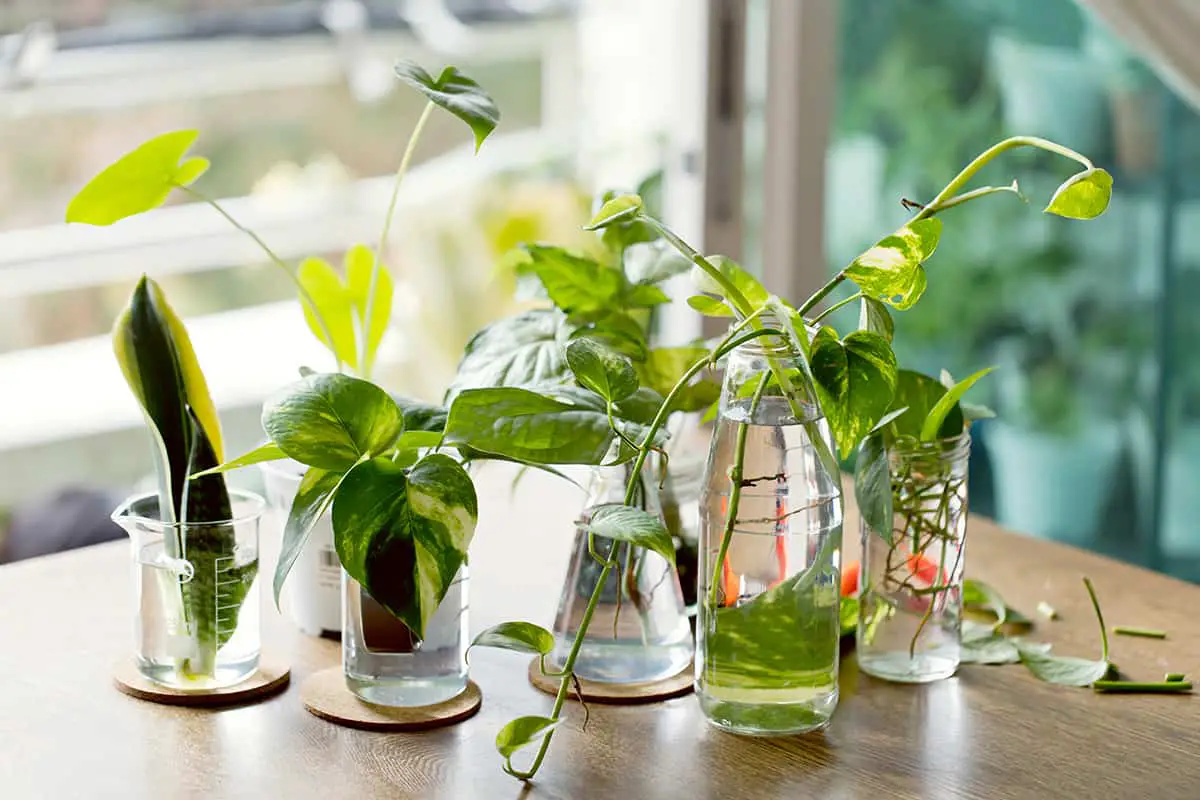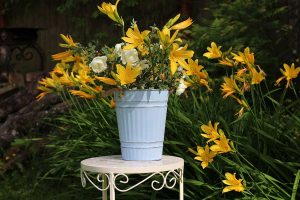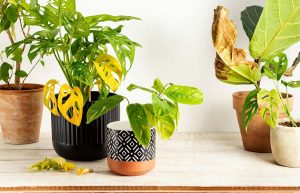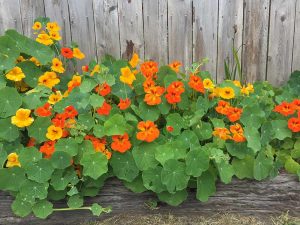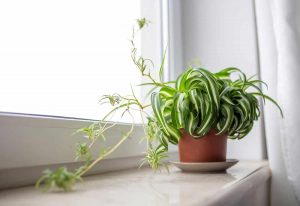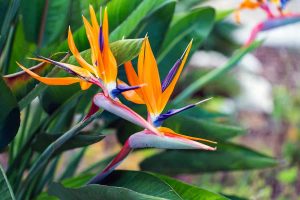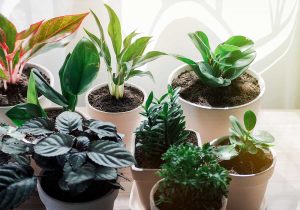Growing houseplants in water offers a low-maintenance, space-saving way to add greenery to your home. This method eliminates the need for soil and allows you to create a thriving indoor garden using only water and nutrients.
Some common houseplants thrive in water, while others require a simple adaptation process. By understanding which plants are suitable, you can easily maintain beautiful, healthy foliage with minimal effort.
In this article, we’ll explore various houseplants that can be grown in water. You’ll discover how to successfully create an indoor water garden, which plants to choose, and how to care for them.
Table of Contents
- Benefits of Growing Plants in Water
- Popular Houseplants for Water Cultivation
- Pothos (Epipremnum Aureum)
- Philodendron
- Lucky Bamboo (Dracaena Sanderiana)
- Spider Plant (Chlorophytum Comosum)
- Peace Lily (Spathiphyllum)
- Chinese Evergreen (Aglaonema)
- English Ivy (Hedera helix)
- Monstera Deliciosa
- Arrowhead Plant (Syngonium podophyllum)
- African Violets (Saintpaulia)
- Coleus
- ZZ Plant (Zamioculcas zamiifolia)
- Wandering Jew (Tradescantia zebrina)
- Jade Plant (Crassula ovata)
- Baby’s Tears (Soleirolia soleirolii)
- Fiddle Leaf Fig (Ficus lyrata)
- Houseplant Maintenance in Water
- Troubleshooting Common Issues
Benefits of Growing Plants in Water
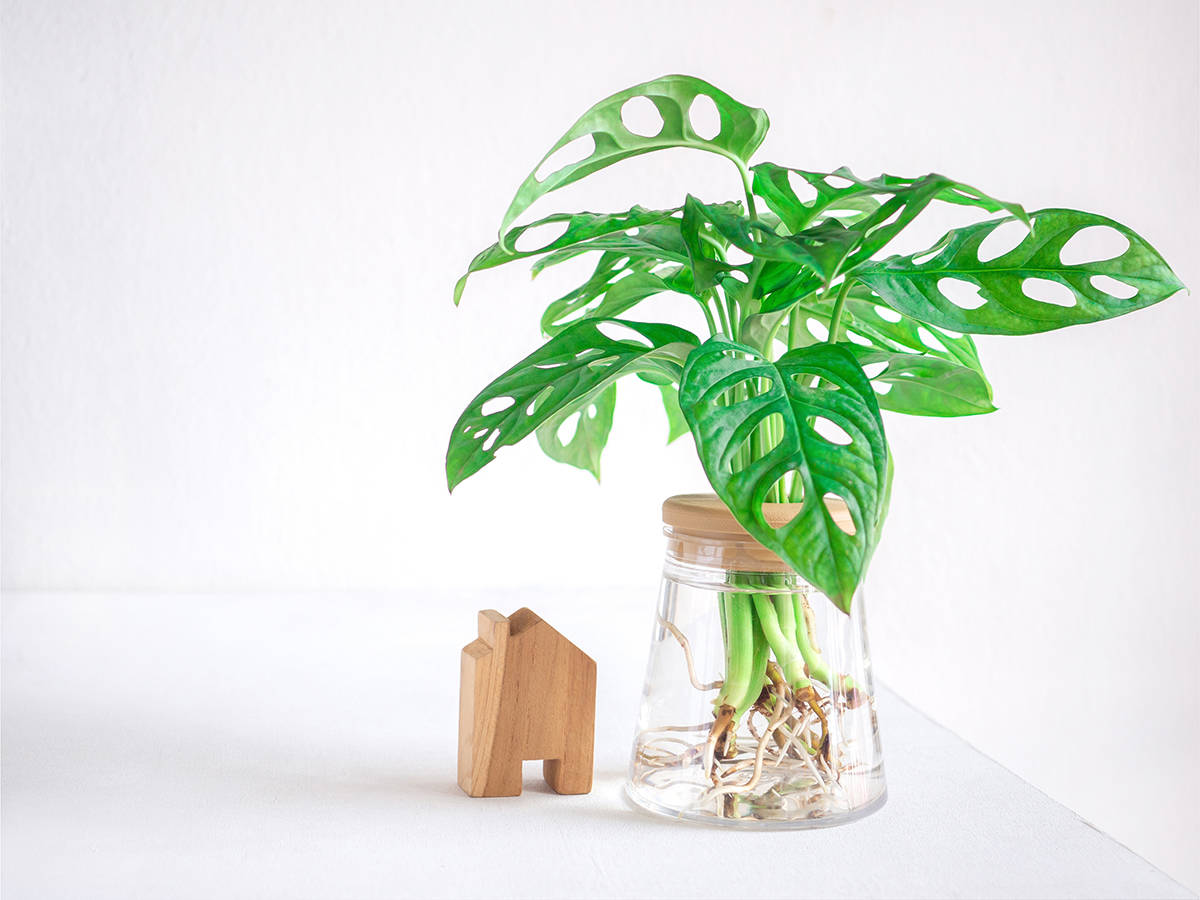
Ease of Care
Growing plants in water is a low-maintenance method suitable for even beginners. You just need to occasionally top up the water levels. It requires minimal effort compared to traditional gardening.
No Soil-Related Issues
By choosing to grow your plants in water, you eliminate soil-related issues. You won’t have to worry about pests, diseases, or weeds that often plague soil-based gardens. Plus, it’s a cleaner alternative, avoiding soil messes.
Aesthetic Appeal
Water-based gardens have a unique and modern look. They are eye-catching and allow you to showcase your plants in creative ways. You can enhance the visual appeal by using clear glass containers to showcase root growth, incorporating various colored pebbles or marbles in the container, and placing the container in an attractive wooden stand.
Popular Houseplants for Water Cultivation
Pothos (Epipremnum Aureum)
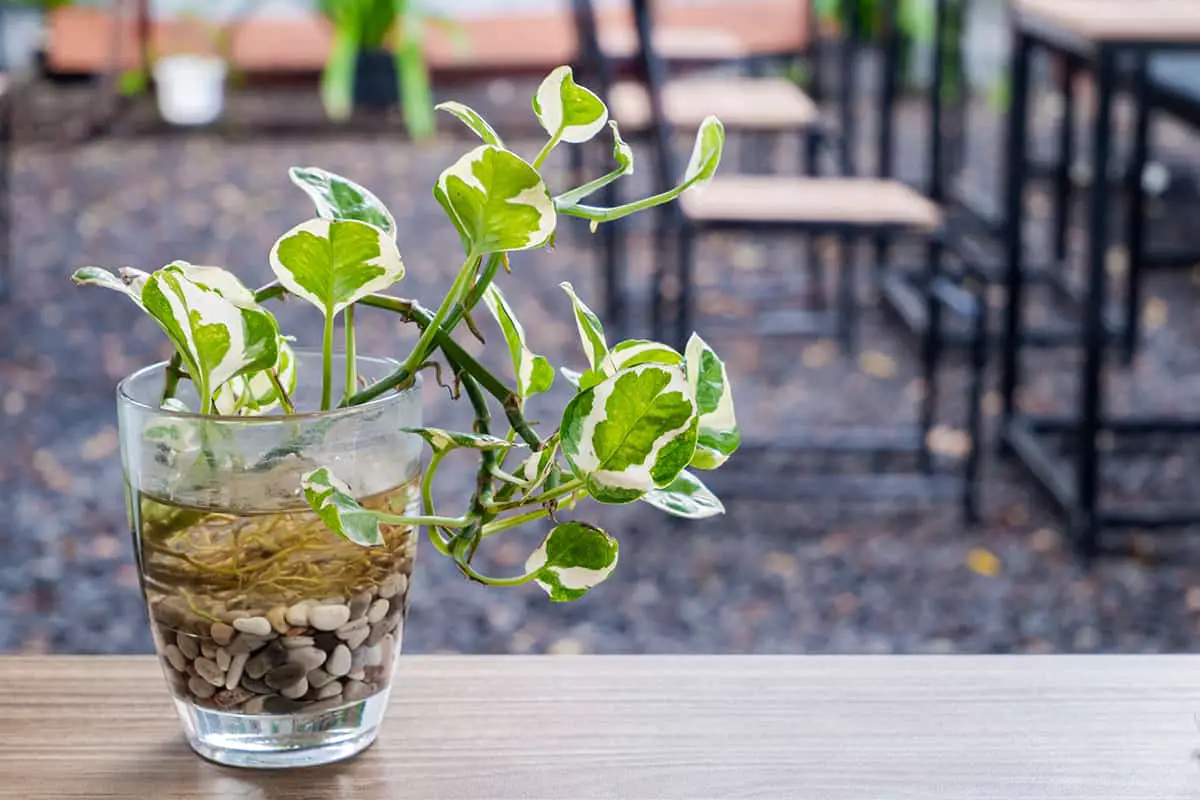
Pothos is an easy-to-grow houseplant that thrives in water. It features heart-shaped leaves and cascading vines. To propagate, simply place stem cuttings in a jar filled with water and enjoy the beautiful trailing foliage.
Philodendron
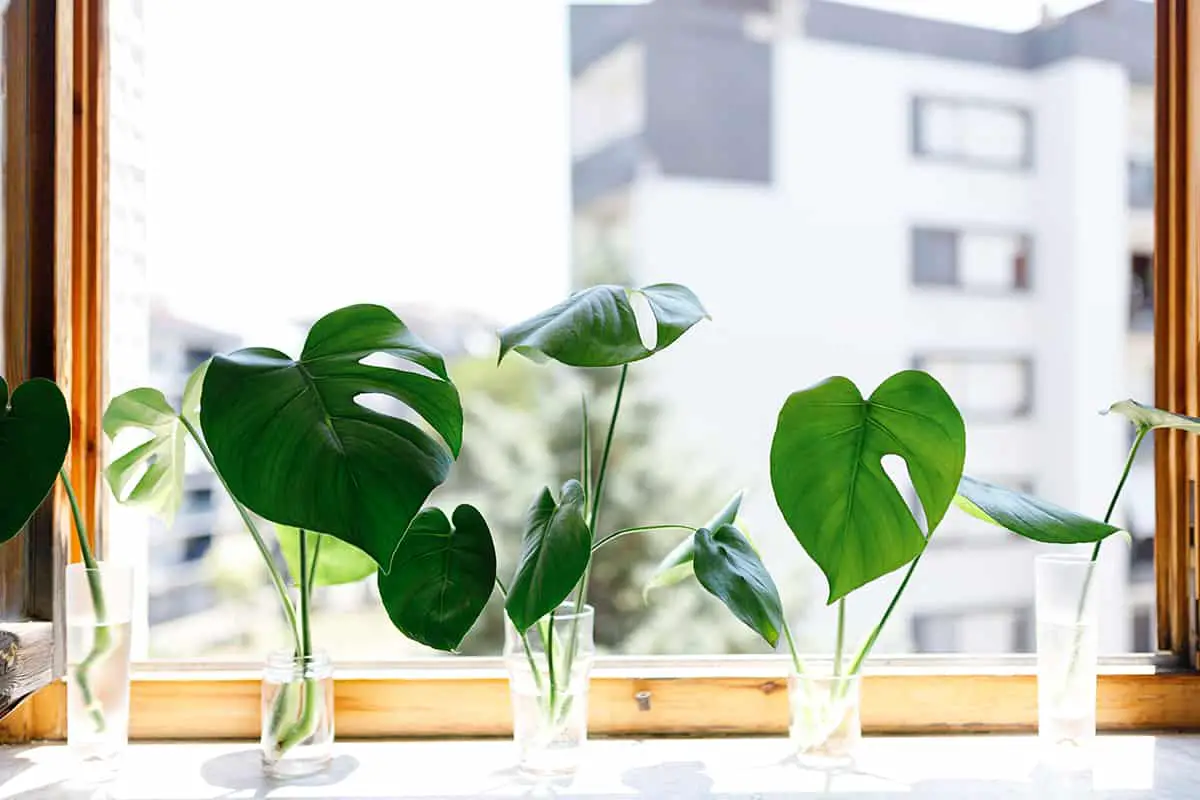
There are several varieties of Philodendron that can thrive in water. Simply place stem cuttings in a container filled with water and watch the roots grow. Remember to change the water regularly to keep the plant healthy.
Lucky Bamboo (Dracaena Sanderiana)
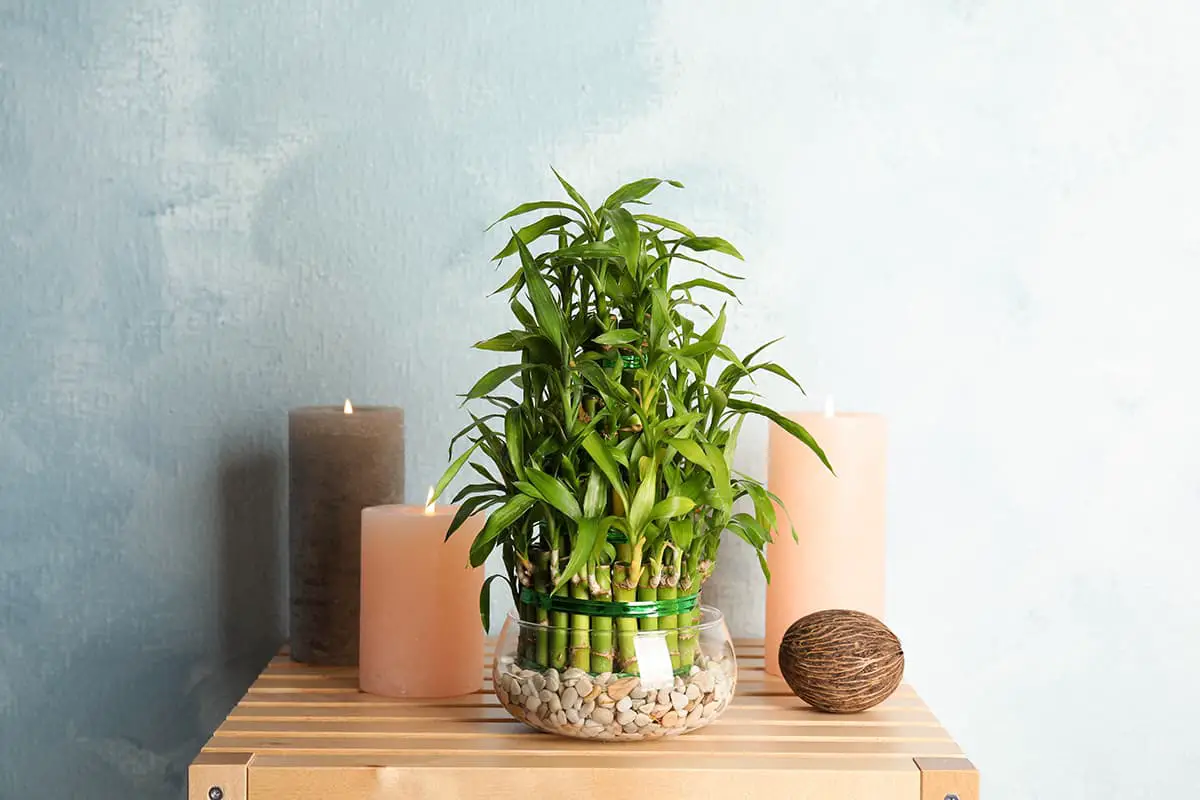
Visit any plant nurseries, and you can see some lucky bamboo grown in the water. Place the plant’s bottom in a container with water, ensuring the roots are submerged. You can add small stones for support and replace the water regularly to keep it fresh.
Spider Plant (Chlorophytum Comosum)

Spider Plant is a hardy plant that can grow in water. Place the baby spider plants, also known as Spiderettes, in a container filled with water and watch the roots grow. Make sure to change the water every week to keep the plant healthy.
Peace Lily (Spathiphyllum)

Peace Lily is another popular houseplant that can be grown soilessly. Remove the roots and soil from the plant, then place it in a container filled with water. For optimal growth, consider adding a few drops of liquid plant food.
Chinese Evergreen (Aglaonema)
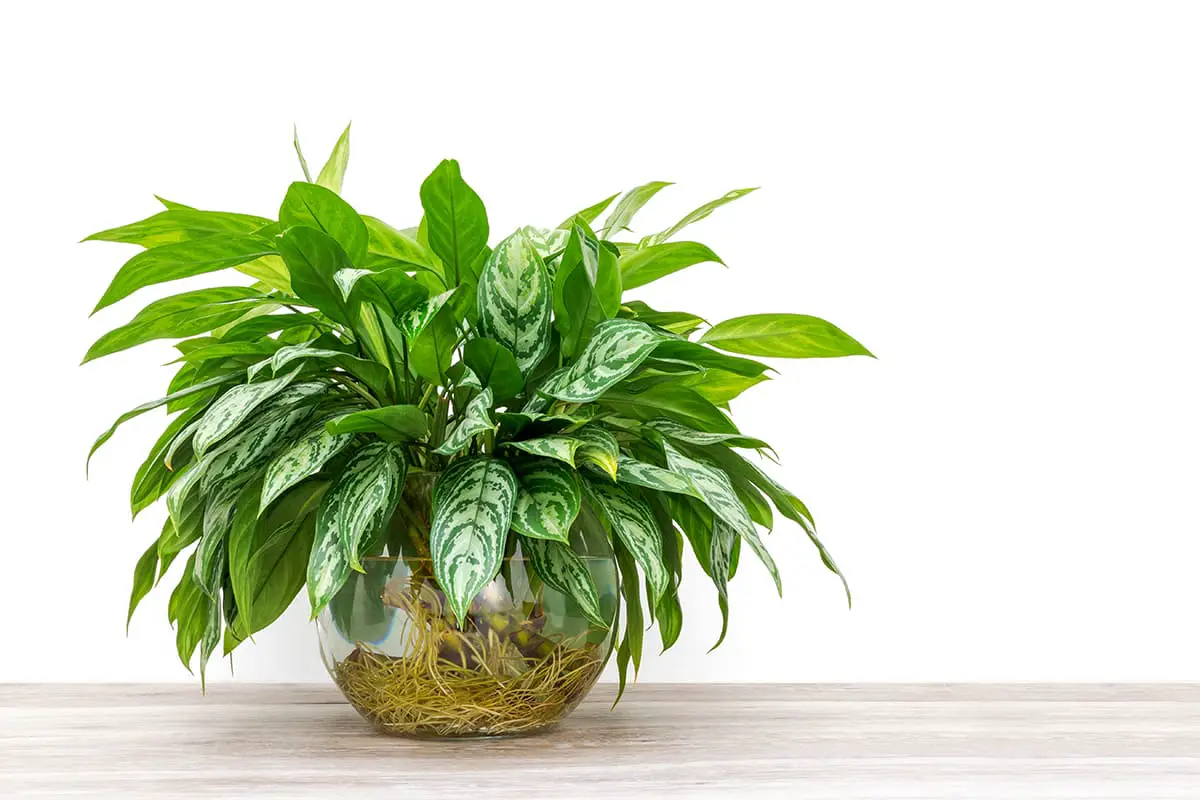
Chinese Evergreen is an adaptable houseplant that can grow in water. To propagate, cut a healthy stem and place it in a container filled with water. Change the water regularly and ensure that your plant receives indirect sunlight.
English Ivy (Hedera helix)

English Ivy can be grown in water by placing stem cuttings in a container filled with water. Make sure to change the water every week and provide indirect sunlight for better growth.
Monstera Deliciosa
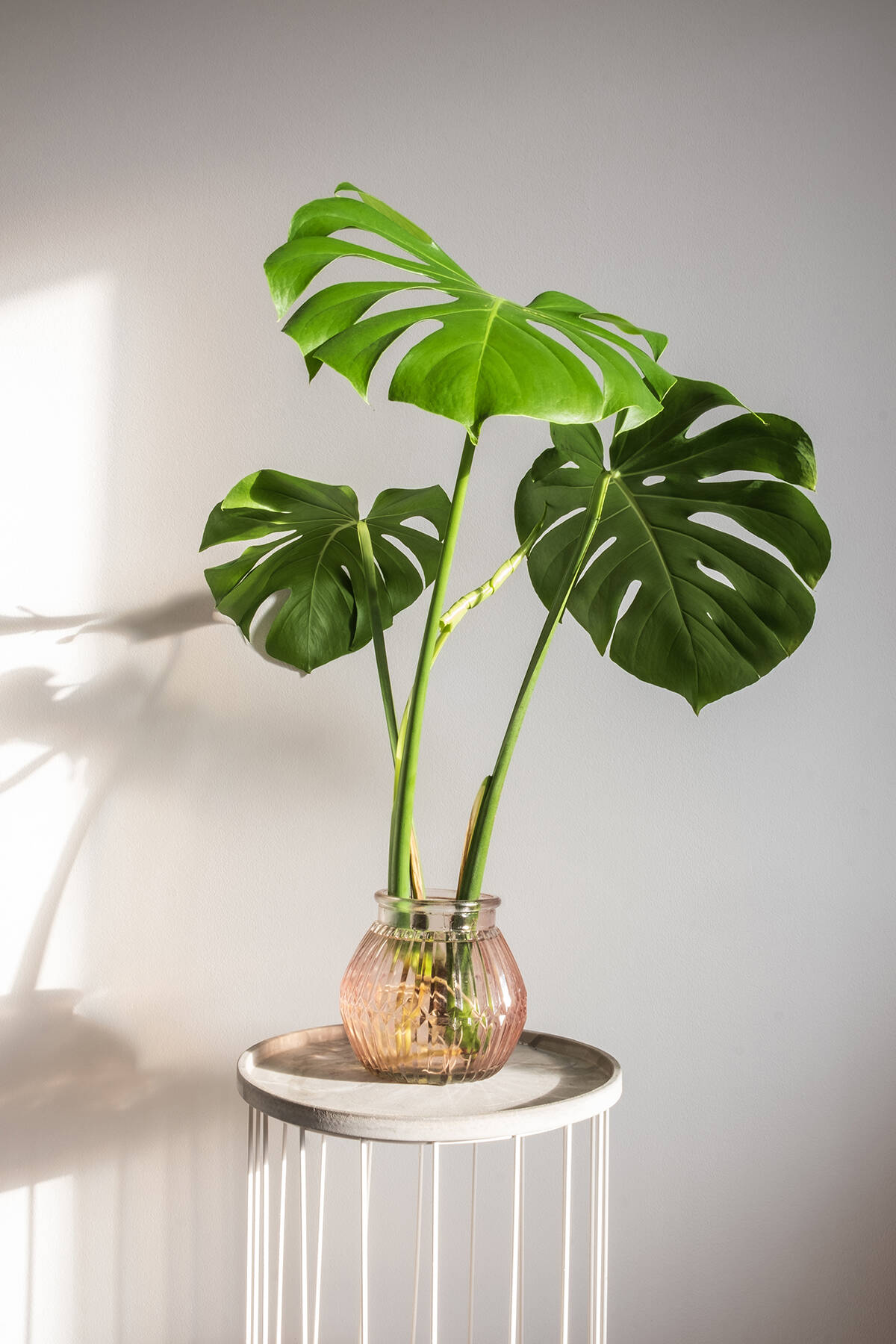
Monstera Deliciosa is a trendy houseplant that can be propagated in water. Cut a healthy stem and place it in a water-filled container. Indirect sunlight and regular water changes will ensure healthy growth.
Arrowhead Plant (Syngonium podophyllum)
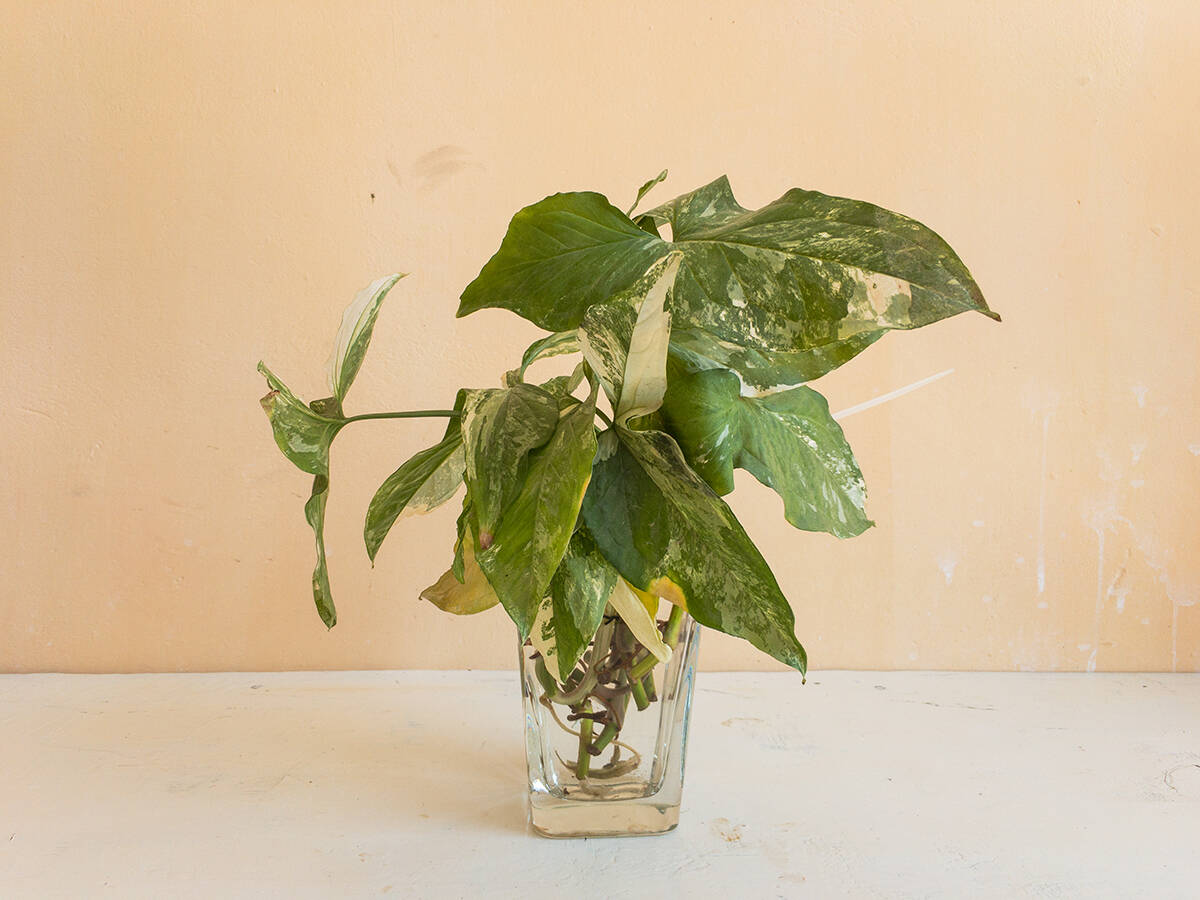
Propagate your Arrowhead Plant by placing stem cuttings in a container filled with water. Ensure the plant receives indirect sunlight and changes the water regularly for healthy growth.
African Violets (Saintpaulia)
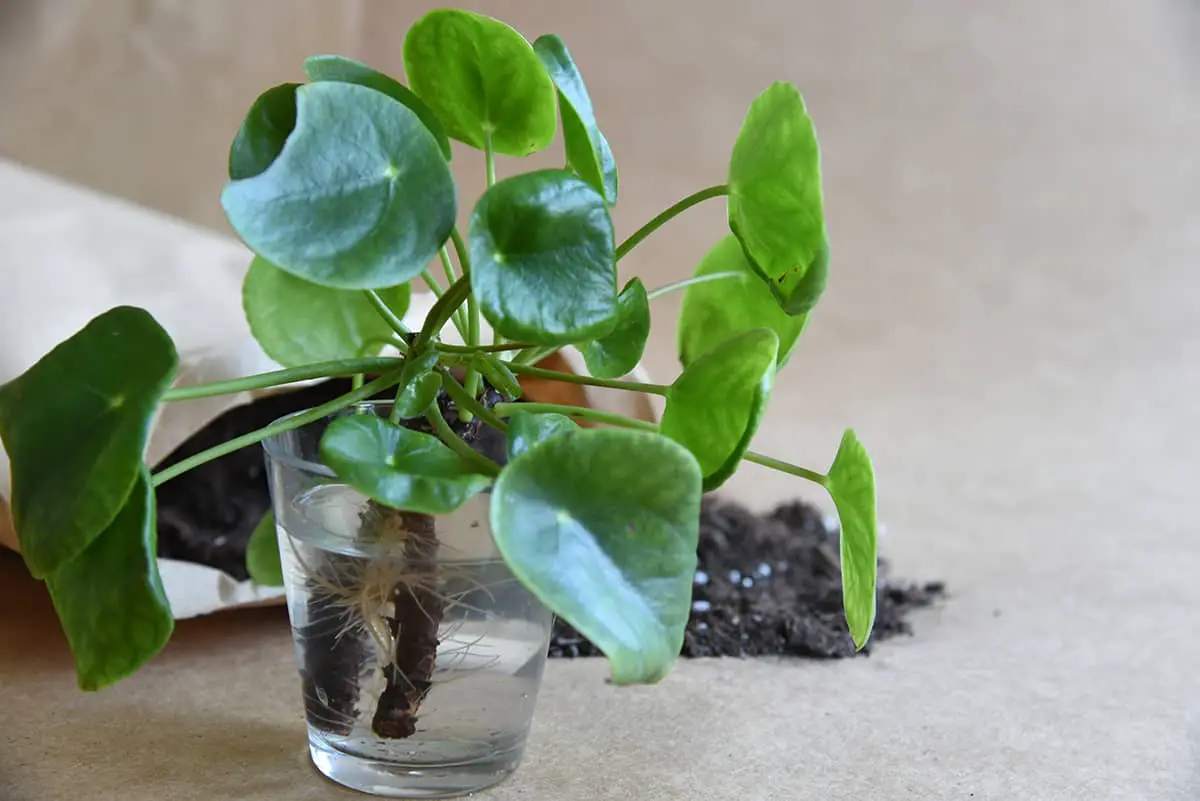
To grow African Violets in water, remove a leaf from the plant and place it in a small jar filled with water. Be sure to change the water every week and provide the plant with bright, indirect light.
Coleus
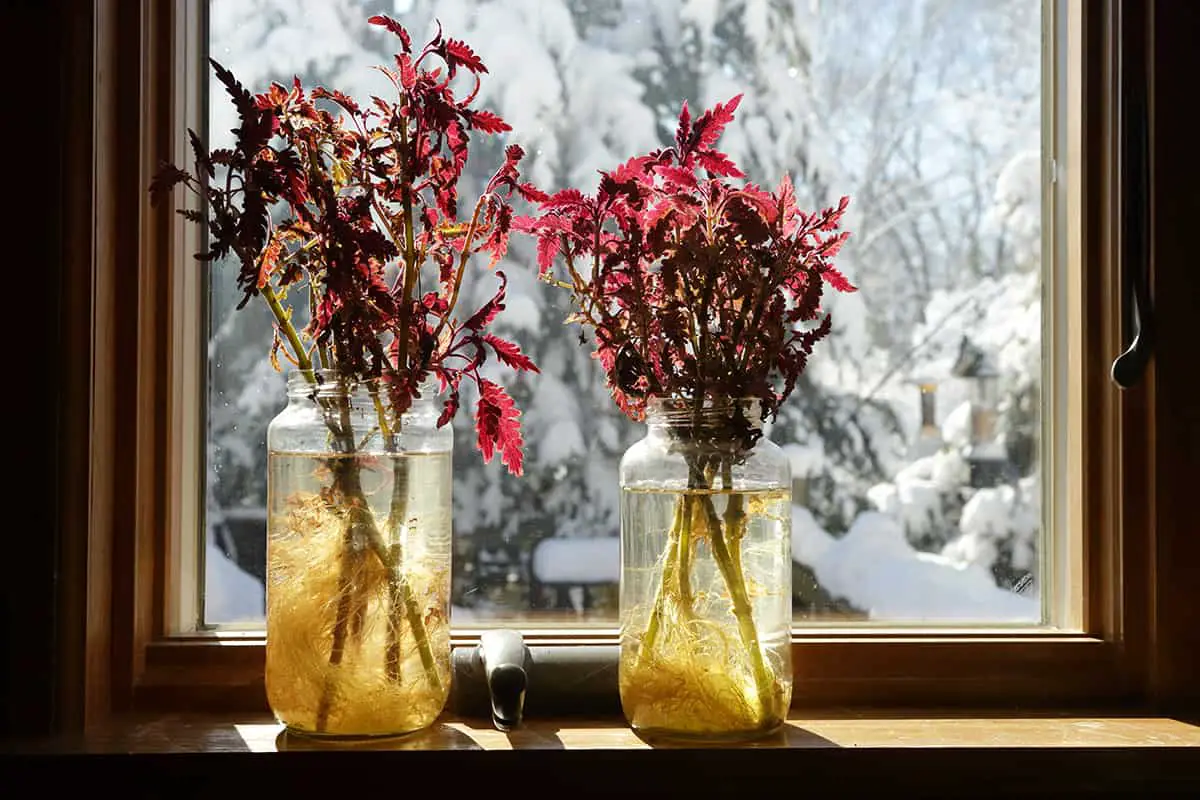
Coleus is a colorful houseplant that can be easily propagated in water. Place stem cuttings in a water-filled container and provide indirect sunlight. Change the water regularly to promote healthy growth.
ZZ Plant (Zamioculcas zamiifolia)
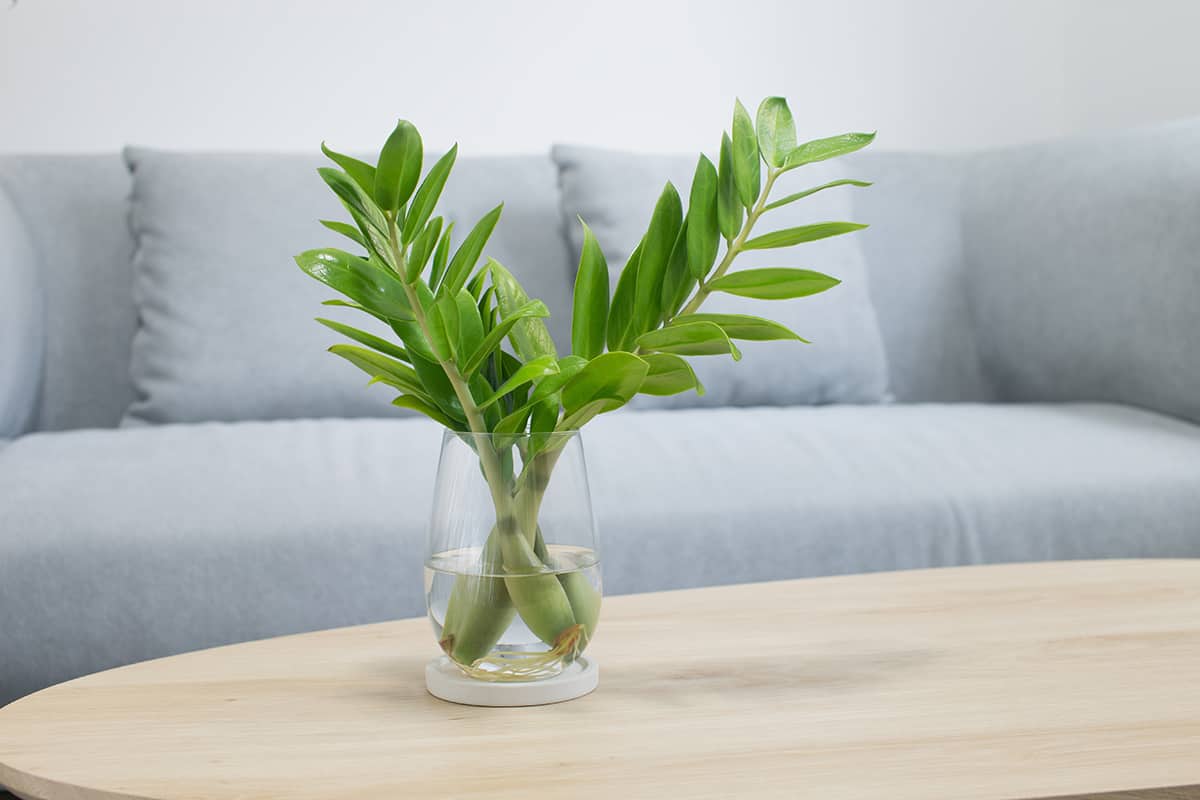
ZZ Plant can be propagated in water by placing healthy stem cuttings in a container filled with water. Ensure the plant receives indirect sunlight and change the water every week.
Wandering Jew (Tradescantia zebrina)
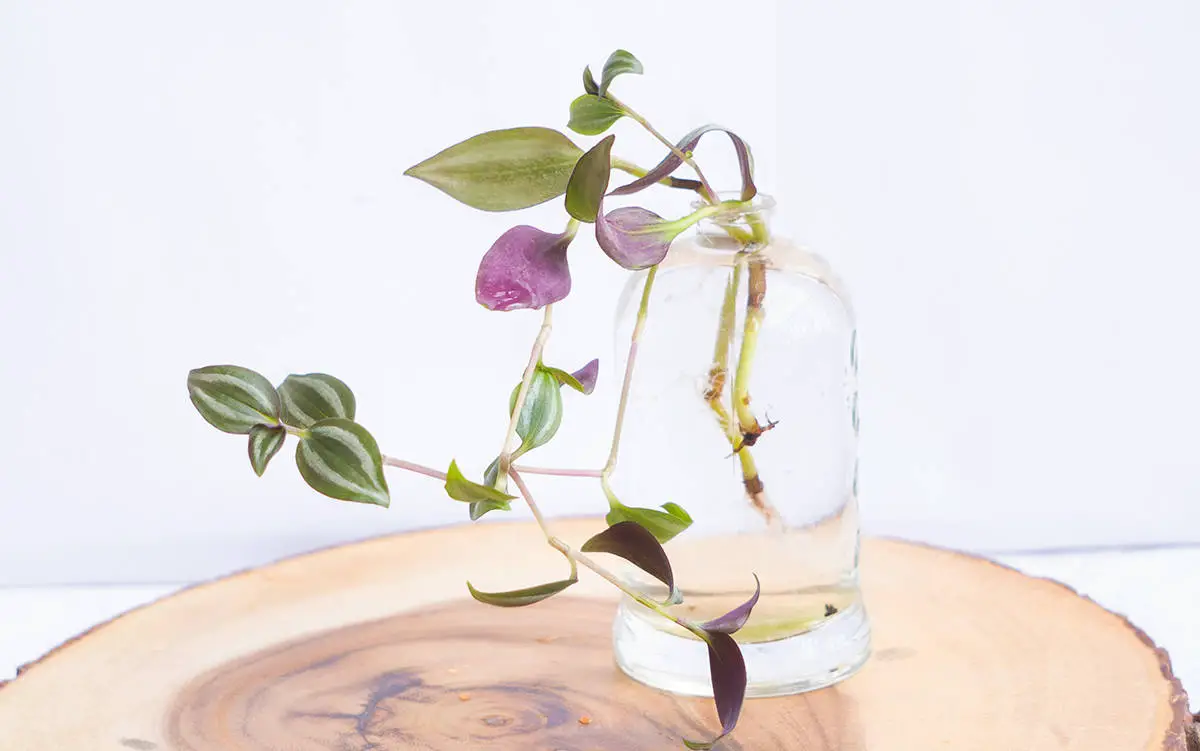
Wandering Jew thrives in water. Simply place stem cuttings in a water-filled container and provide bright, indirect light. Remember to change the water regularly to keep the plant healthy.
Jade Plant (Crassula ovata)
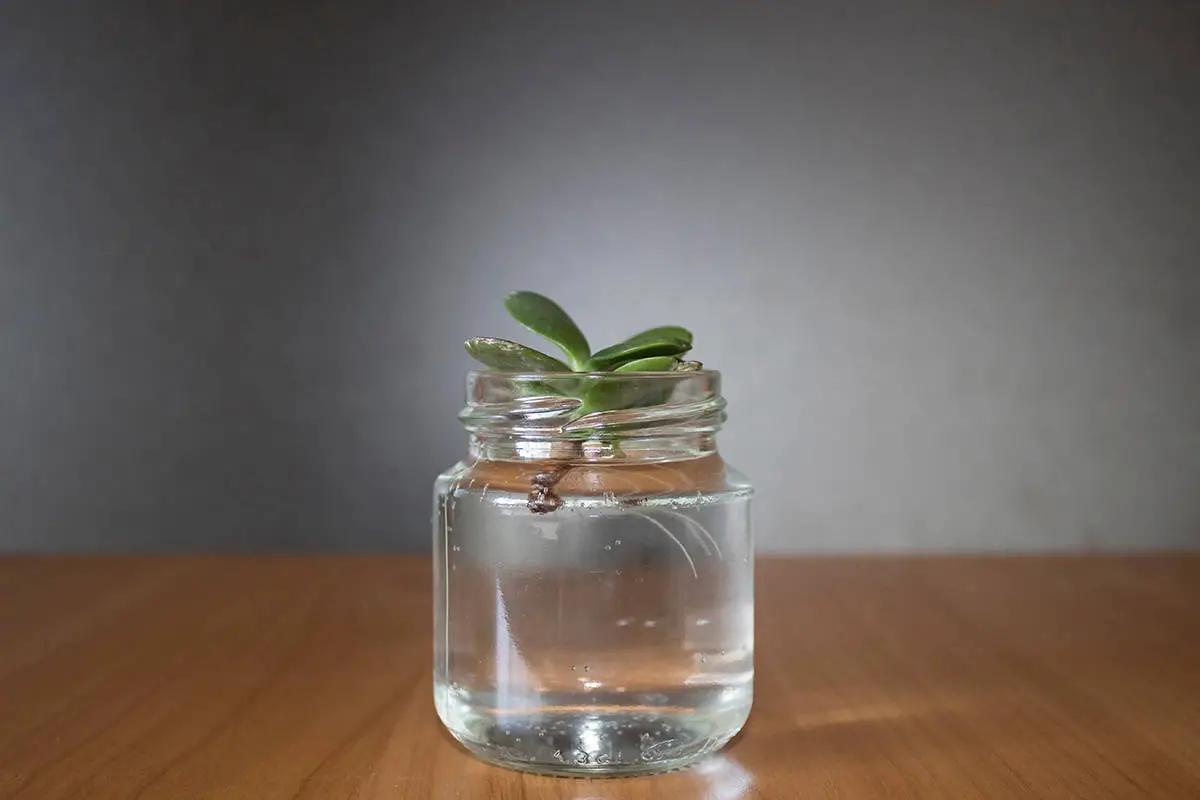
Although less common, Jade Plant can be propagated in water. Place a healthy leaf cutting in a container filled with water and keep it in a bright spot with indirect light.
Baby’s Tears (Soleirolia soleirolii)
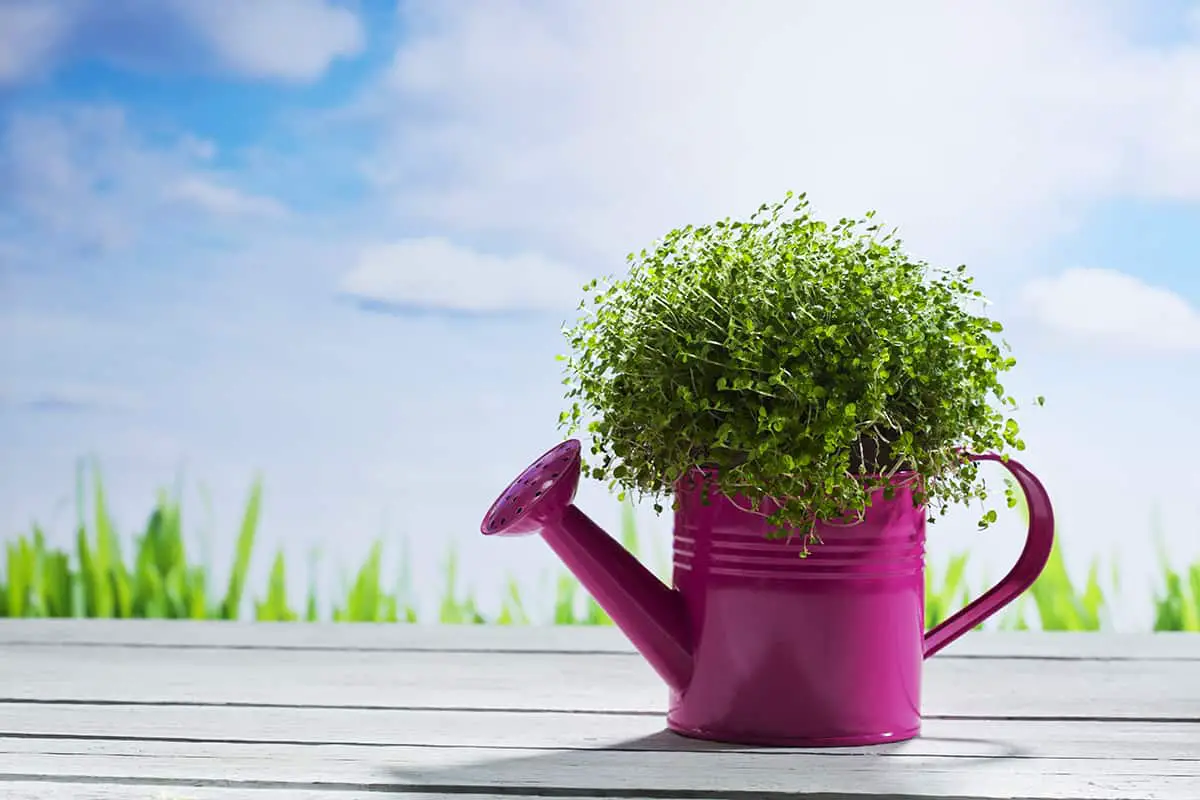
Baby’s Tears is a delicate houseplant that can grow in water. Place healthy stem cuttings in a container filled with water, making sure to change it regularly and provide indirect sunlight.
Fiddle Leaf Fig (Ficus lyrata)
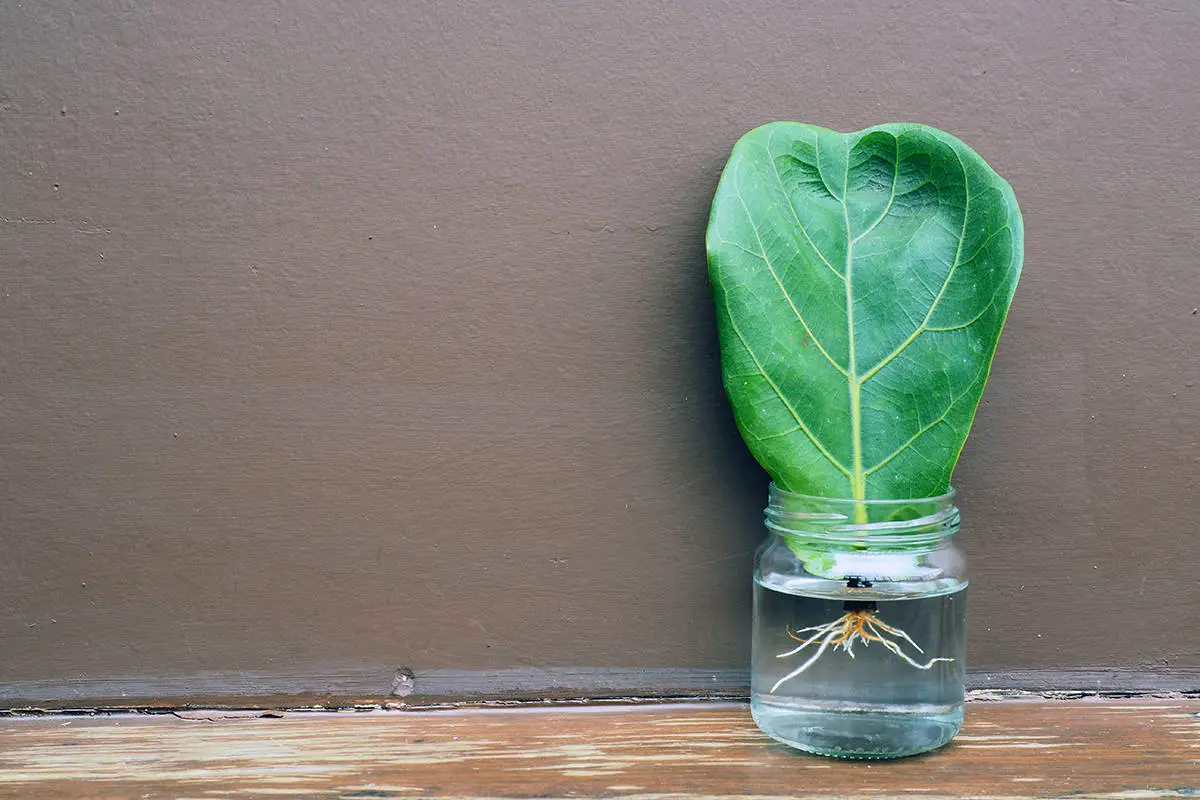
Fiddle Leaf Fig can be propagated in water by placing a healthy stem cutting in a container filled with water. Ensure the plant receives indirect sunlight and change the water every week for optimal growth.
Houseplant Maintenance in Water
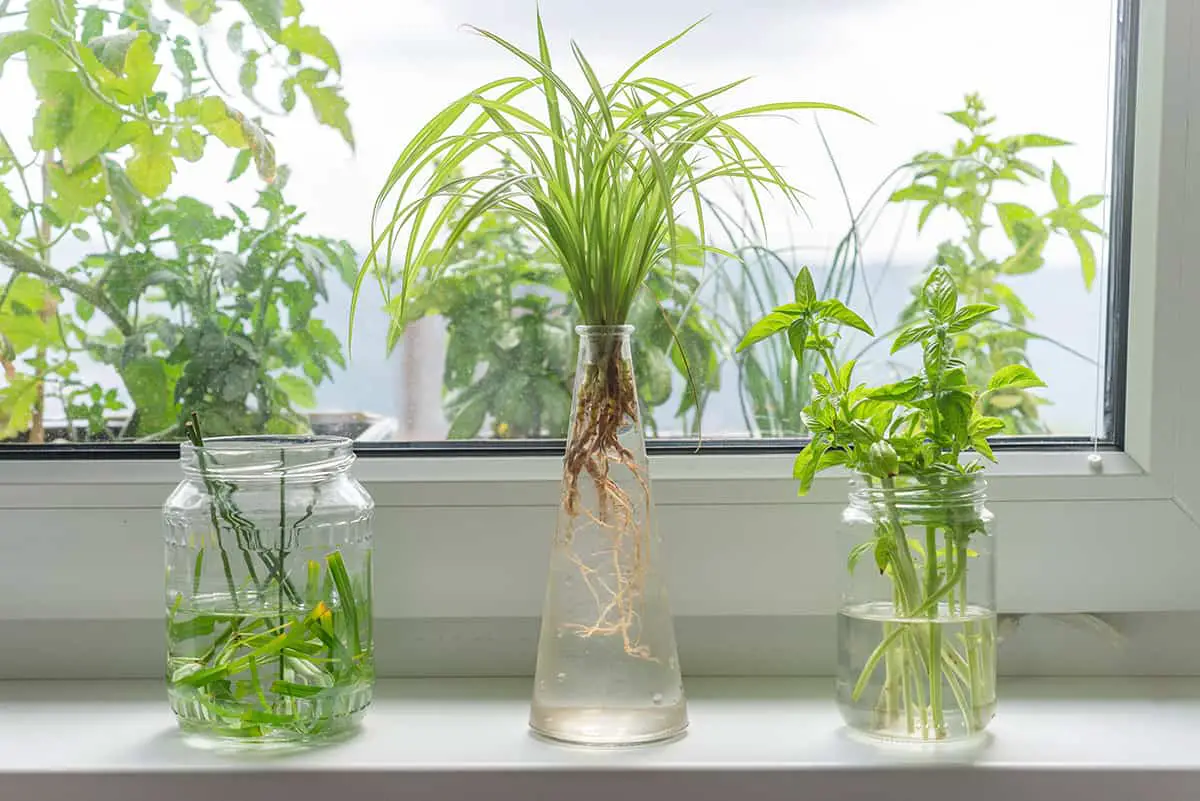
Selecting Containers
When starting your water garden, select clear glass containers. This allows sufficient light to reach the plant roots and, at the same time, prevents algae growth. Choose containers with stable bases and wide openings for easy access and maintenance.
Water Quality and Conditioning
Use room-temperature water, preferably distilled or filtered. Tap water might contain chemicals like chlorine, which can harm plants. To condition tap water, let it sit for 24 hours to release the chlorine. Change water every 1-2 weeks to maintain cleanliness.
Light
Houseplants need different amounts of light depending on the species. Determine your plants’ light requirements and provide proper lighting. Artificial light sources like LED grow lights or fluorescent lights can help. Place these lights 6-12 inches above your plants and set a timer for 12-14 hours of light per day.
- Low light plants: Snake plant, pothos, heartleaf philodendron
- Medium light plants: ZZ plant, peace lily, spider plant
- High light plants: Fiddle-leaf fig, croton, English ivy
Temperature
Maintain the water temperature between 68-72°F (20-22°C) for optimal plant growth. Cold water may slow the root development of your plants. Invest in a small aquarium heater if needed. Alternatively, choose a location away from drafts and direct sunlight to maintain a stable water temperature
Nutrients In Water
Consider adding nutrients to your water for better plant growth. Purchase a hydroponic nutrient solution or make your own. For example, you can mix 1 tsp of 20-20-20 fertilizer, 1 tsp of Epsom salt, and 1 gallon of water. Remember to change the nutrient solution every 2 to 4 weeks.
Troubleshooting Common Issues
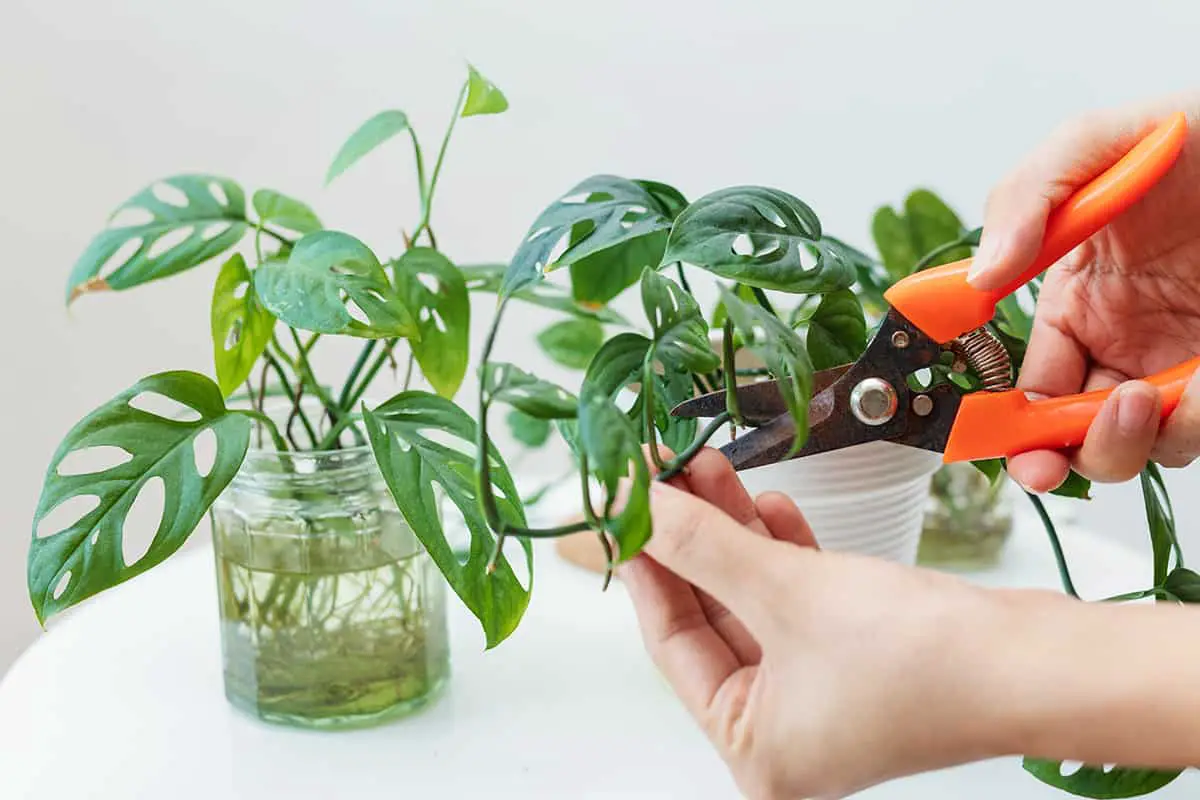
Root Rot
If your plant’s roots appear brown and slimy, it’s likely due to root rot. To remedy this, snip off the damaged roots and clean the container thoroughly. Use fresh water and ensure you’re maintaining a healthy water-change schedule.
Yellowing Leaves
Yellowing leaves can be a sign of inadequate light or nutrient deficiency. Ensure your plant is placed in a well-lit area where it can receive indirect sunlight. In addition, you can add a liquid fertilizer specifically made for water plants, as per the label instructions.
Stunted Growth
Stunted growth might indicate an insufficient amount of space for the plant’s roots. To tackle this issue, transfer the plant to a larger container. Additionally, make sure your plant is getting proper nutrients by using a water-soluble fertilizer. Observe any improvement in growth over time.
